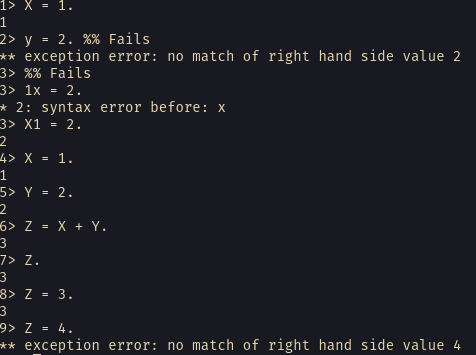Erlang Variables
June 14, 2021
If you have worked with other languages like JavaScript, Java, Python etc, you would be surprised by what Erlang understands as variable.
In Erlang, variables starts with uppercase letter, thus, C, X, Ape, Ant are all valid identifiers for Erlang variables.
Variables can not start with lowercase letter or begin with a number.
Erlang variables can include can alphanumeric characters, an underscore and @ symbol.
X = 1. %% Validy = 2. %% Invalid1X = 2. %% Invalid
When assigning to a variable - as we do call it in other languages, Erlang actually does something called pattern matching. Comparing the values on the right to the values on the left.
A pattern match would only succeed if the two operands match.
Thus, in Erlang, a variable get assigned to if it is either unbound or has the same value as the value at the right.
The = is a special symbol that does not do assignment but makes the pattern matching operation to be successful if its conditions are met.
Hence, in Erlang = is known as a pattern match operator which evaluates the value of the right hand side (RHS) then matching the result with the left hand side (LHS)
X = 1. %% successfulY = 2. %% successfulZ = X + 1. %% successful, Z is unbound toZ. %% => 3Z = 3 %% successful, Z is now 3, but, we want it to have the value 3Z = 4 %% fails, Z is already holding 3, and 4 won't match against it.
There is nothing as global or private scope in Erlang, all variables are lexically scoped and are unrelated even if they exists in different functions;

Continue to the next post on Erlang Learning: Erlang Pattern Matching
Ciao!
Edit on githubTweet